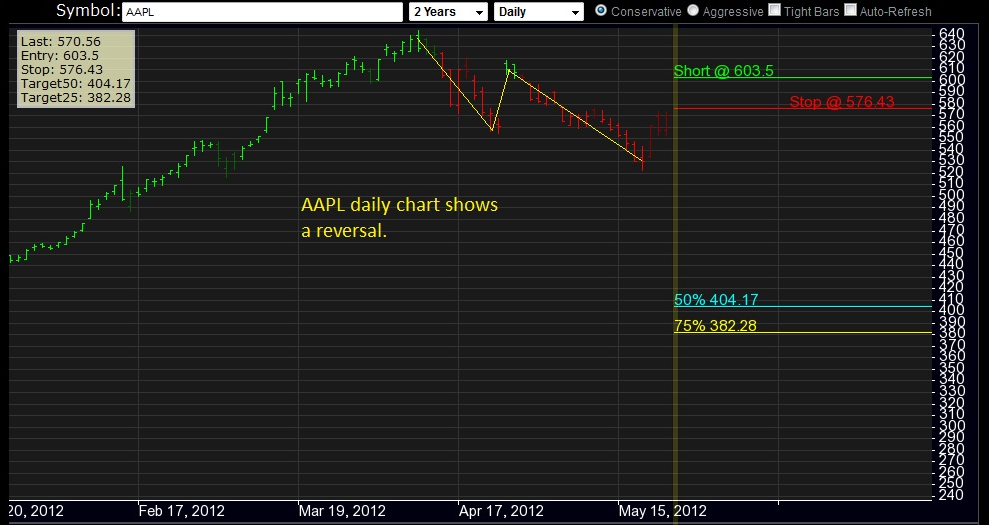 By: Chris Irvin, Veteran Instructor & Trader at The Wizard
By: Chris Irvin, Veteran Instructor & Trader at The Wizard
It is the most frustrating thing in the world! You sift through, what seems like a million different stocks to find the perfect trade. You time your entry perfectly, and at the moment you enter the trade the chart rolls over on you. It is like the trading floor has a camera focused on you and everyone is told to do exactly the opposite of what you are doing. You can almost hear the snickering.
Okay, we all know that doesn’t really happen, but there are times when it sure feels like it. When we enter or exit a trade, it is as a result of something that convinces you that your stock is going to move in a particular direction for a period of time or the mover has ended. Some traders only use one signal to enter a trade and others use a cornucopia of indicators to give them the green light. Regardless of the number of indicators you use, you might want to consider this – Stocks are creating trends, retracements and reversals in multiple timeframes. If you are not keeping track of multiple timeframes you might be making poor trading decisions.
In a previous blog (Trends, Retracements, and Reversals) on March 9, 2012, I spent some time talking about the definition of a bullish trend, and what would define a reversal. Here is a refresher:
The definition of a bullish trend is “a series of higher highs and higher lows.”

Stocks can change directions without changing trend. This would be called a retracement. Retracements are part of a healthy trend. They are the result of minor profit taking which allows new buyers to enter the bullish position at a slightly better price. In order to continue a bullish trend the stock simply cannot have a retracement that falls below the previous low. If it does set a lower low, then by definition the trend, and possibly your trade, is over. When a retracement is severe enough to move below the previous retracement low it is considered a reversal.

The trends, and subsequent ending of trends, are happening in all timeframes. There are some traders that make trading decisions on the two minute chart, there are others that watch a ten, and still others that are making decision based on the daily and weekly charts. The problem for these traders is that they may not be paying attention to what is going on in the other timeframes. Let’s say I am a trader that typically makes all of my trading decisions based on the daily chart. I have entered a trade and have watched the position move thought several retracements, but it continues to set higher lows and push to higher highs. Finally the trade begins to run out of steam and sets a lower high, and then a lower low. This would ordinarily be my exit signal but this time I glance at a weekly timeframe. The larger timeframe appears to be in the retracement phases of a bullish trend. What to do?

The first rule of your trading plan should be – “Never let a winner turn into a loser.” If your entry has allowed you to be in a small profit at this point you should consider exiting the position and collecting your money. If instead, you have a large profit and are comfortable letting the trade run, then consider that the next time you look at your charts they could look like this…

If you decide to let a trade run, make your exit decisions on the larger of the two timeframes. With less micro managing you allow the stock more room for larger swings that can lead to larger profits. Just make sure you don’t let a winner turn into a loser.
So what would be the “take-a-way” from this blog? Never trade with your eyes on just one chart. Traders should consider using at least two charts, one for the big picture and one for the details of entry and exit. This is why The Wizard software provides both long and short term trend indicators to all of our customers.

(AAPL is not a buy, sell, or hold recommendation. It is only being used as an example to demonstrate the use of multiple timeframes in The Wizard software.)


From the charts above you can see that the short term (daily) chart made a complete reversal in the process of completing its retracement on the weekly chart. It may take a little more work on your part, but keeping track of multiple timeframes can help you to become a more successful trader.
Regards,
Chris Irvin
Senior Instructor
Would you like a free 7-day trial to The Wizard?
Successful investing doesn’t need to be complicated. With The Wizard, you get exact entry and exit signals on over 9,000 stocks, over 300 ETFs, 29 currency pairs and all the major Futures contracts – down to the exact Penny or Pip. The Wizard is an intuitive scanning tool that includes a powerful and proven Trend Indicator, which hasn’t missed a major market move in 20 years. And now you can try The Wizard risk-free for 7-days. No credit card required. Just click here.
“This tool is too valuable for you not to have. It is simple, efficient, and it tells me when to buy and sell. The Wizard has given me an opportunity to have better long term performance than any tool I have come across in my 18 years in the business.” - David C. Jones – Managing Director, DCJ Global Wealth Management
